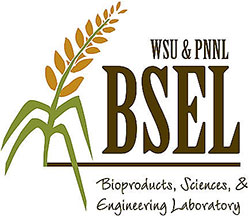Science Far From Solitary
Universities and national lab team up to speed catalysis research

Basic science is no longer solitary, with a cliché white-lab-coat-clad scientist gingerly pouring liquids and quickly scribbling notes. Today's science is a team effort, with experts from different institutions working together toward common objectives. At Pacific Northwest National Laboratory, our catalysis researchers continually collaborate with the goal of meeting society's pressing needs for an abundant, clean, and efficient energy supply.
"Collaboration is immensely effective and synergistic," said Dr. Monte Helm, Deputy Director of the Center for Molecular Electrocatalysis, an Energy Frontier Research Center led by PNNL. "Sharing information from our specialties means we can move the science forward more quickly."
Building Bonds Between Atoms and People
At the Center for Molecular Electrocatalysis, scientists answer fundamental questions about catalysts that can transform electrical energy into chemical bonds. Electrocatalysts could one day store intermittent renewable energy and release it when needed. This work benefits from experts at PNNL and four universities.
"We need people with expertise in proton movement and electrocatalysis to do chemical transformations," said Helm. "That led us to our collaborators."
A key collaborator is Professor James Mayer, an expert in proton-coupled electron transfer reactions at the University of Washington. Mayer led a research effort to build two iron-based compounds to help protons move to where they are needed, rather than delaying the proton movement or sending them to the wrong place, as is seen in other catalysts.
Another member of the Center team is Professor Sharon Hammes-Schiffer, a theoretical and computational chemist. She and her colleagues at the University of Illinois, with PNNL's Dr. Aaron Appel, explained the link between a nickel-based electrocatalyst's speed and the environment's acidity. They found that the catalyst's speed changes because of the different proton and electron transfers occurring at different pH levels.
The newest Center collaborator is Professor Shannon Stahl, University of Wisconsin-Madison. "Many of the concepts that we have learned [in catalytic oxygen reduction] also apply to electrochemical oxygen reduction, and we are thrilled to be able to team up with electrocatalysis experts at PNNL to address this long-standing problem," he said.
Stalking Better Biomass Answers

Washington State University's Bioproducts Sciences and Engineering Laboratory, or BSEL.
But collaboration isn't just across mountains and state borders. It can be found just down the road from PNNL—at Washington State University's Bioproducts Sciences and Engineering Laboratory, or BSEL.
During the last year, BSEL scientists worked closely with scientists in EMSL, the Environmental Molecular Sciences Laboratory at PNNL, toward making isoprene from biomass material using Bacillus species. As BSEL Director and Battelle Distinguished Professor Birgitte K. Ahring stated, "We used extended data mining within several scientific fields in an innovative, integrated fashion to make new discoveries not possible with conventional approaches. Joining forces between significant scientific questions in the field of biofuels and bioproducts and a Department of Energy user facility with state-of-the art technology and expertise has proven to be a powerful way to bring the field forward."
The leaf-green laboratory overlooking the Columbia River provides an easy, productive synergy by combining student classrooms, scientist and faculty offices, and lab space "We can easily share with the students as guest lecturers, and we get students in our labs in the summer who do tremendous work," said Dr. Rick Orth, who designs chemical processes for biofuel. "And, some of my colleagues are earning graduate degrees at WSU-Tri-Cities while continuing to work at PNNL."
At BSEL, WSU and PNNL scientists took the final steps with Archer Daniels Midland Company to commercialize the catalytic process that turns glycerol into propylene glycol, a common additive that is generally manufactured from petroleum. Funded by DOE's Efficiency and Renewable Energy Office (EERE), the team's catalyst turns a plant-based compound into the additive.
The Bottom Line
Similar to the popular proverb "It takes a village to raise a child," to bring basic science to application fruition in a timely manner takes collaboration. PNNL's multi-institutional catalysis team gives proof to this new take on the proverb.

